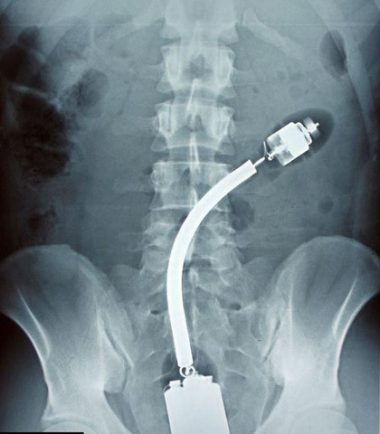

The string can be used to pull on the stent and remove it. This string is allowed to come out of the patient’s urethra. Sometimes a string has been left attached to the end of the stent. Stents can be removed two different ways. Contact your doctor and bring the stent with you to your appointment. If this happens, wash the stent and place it in a plastic bag. It is very rare for a stent to fall out of the body.


If the stent falls out, what should I do? In rare cases, however, the stent may slip into the bladder or the kidney. The curved ends of a double-J stent usually keep it in place. Yes, the stent is flexible and will move with your body. Call the hospital or your doctor if you see large amounts of blood in your urine and it does not go away with rest and hydration. Small amounts of blood may be present in the urine after stent placement and usually disappear in a few weeks. I’ve had blood in my urine since the stent was placed. Call the hospital or your doctor if you experience a serious burning sensation (not mild) when urinating or if you continue to have severe pain despite use of pain medication. Ask your doctor about medication to treat these symptoms. These symptoms are usually caused by the inserted stent. You may feel mild to moderate pain in your lower abdomen, and you may have a strong urge to urinate. I’ve had pain with the urge to urinate since the stent was placed. Report any signs of infection – including severe pain, chills, or fever – to your doctor right away. Your doctor may prescribe an antibiotic to treat or prevent an infection or to relieve your pain. Your doctor will tell you when the double-J stent needs to be removed. Sometimes a local anaesthetic, with or without sedation, is administered.įrom several days to a few weeks, depending on why it was placed. The procedure is usually performed with the patient asleep (under general anaesthesia). The stent is placed by sliding it over a flexible wire inserted into the ureter. The bladder is inspected, and the ureteric opening is located. A tube with a tiny optic camera is inserted through the urethra into your bladder.

Ureteral stent placement is a surgical procedure. A double-J stent is a ureteral stent with curving ends that prevent the stent slipping into the bladder or the kidney. A ureteral stent is a soft, hollow tube placed temporarily into the ureter to help drain urine from the kidney into your bladder.


 0 kommentar(er)
0 kommentar(er)
